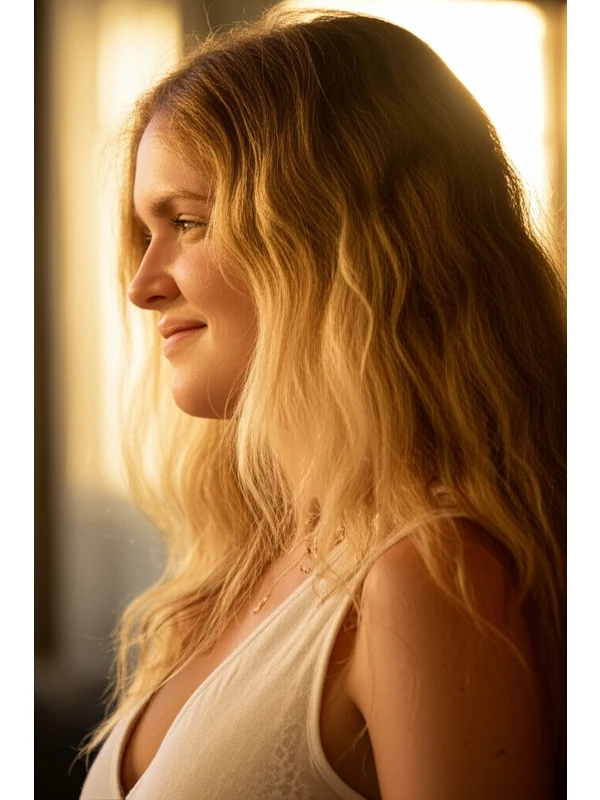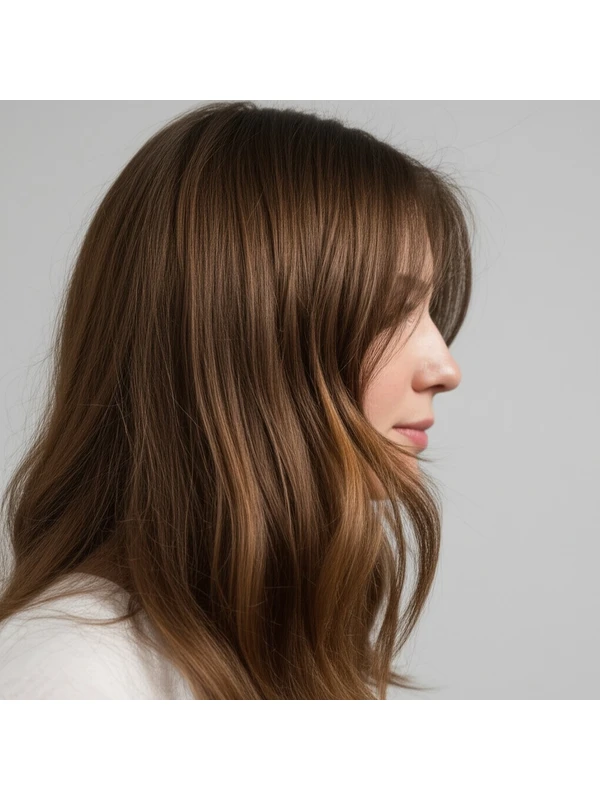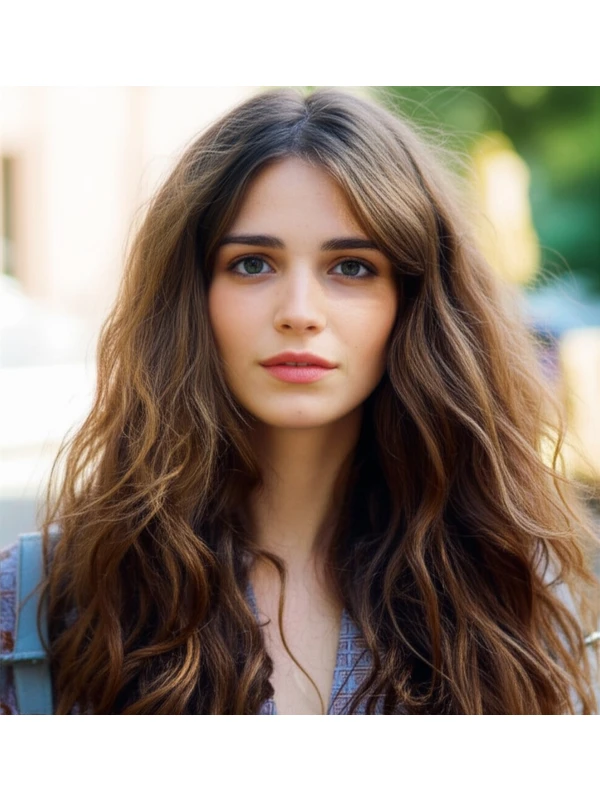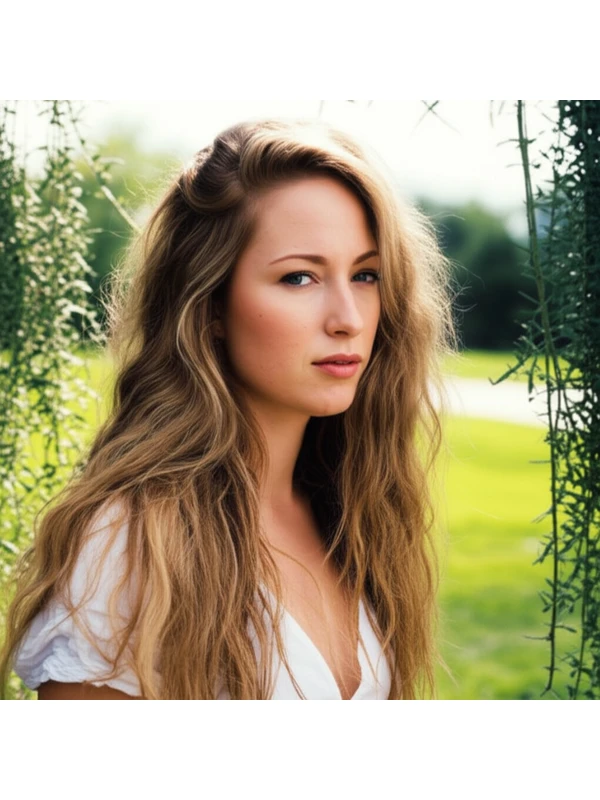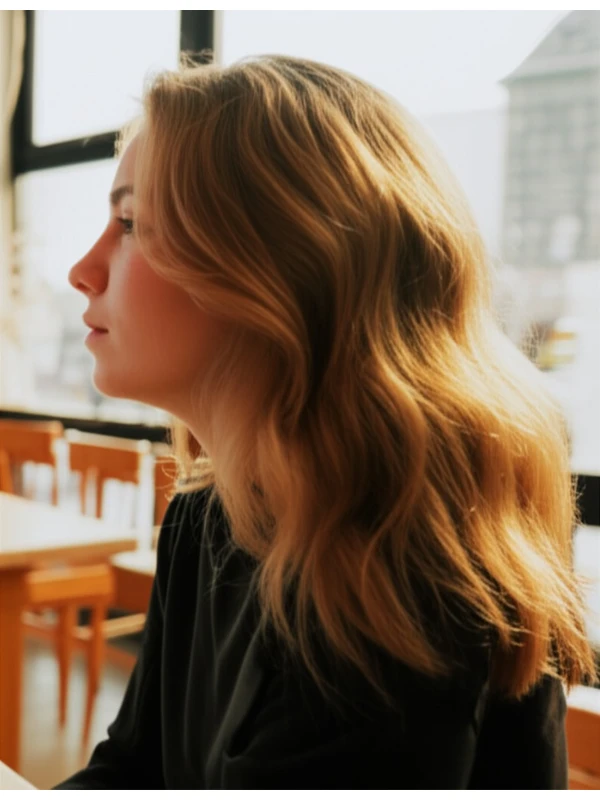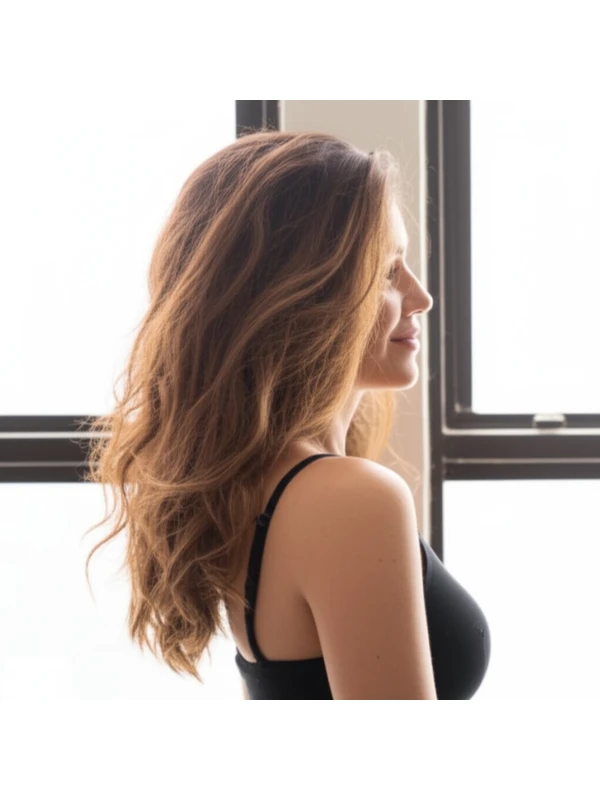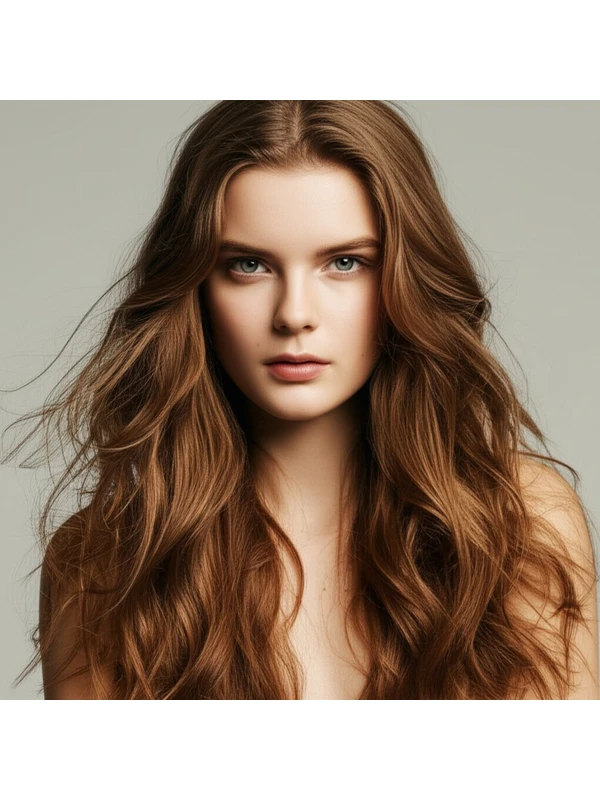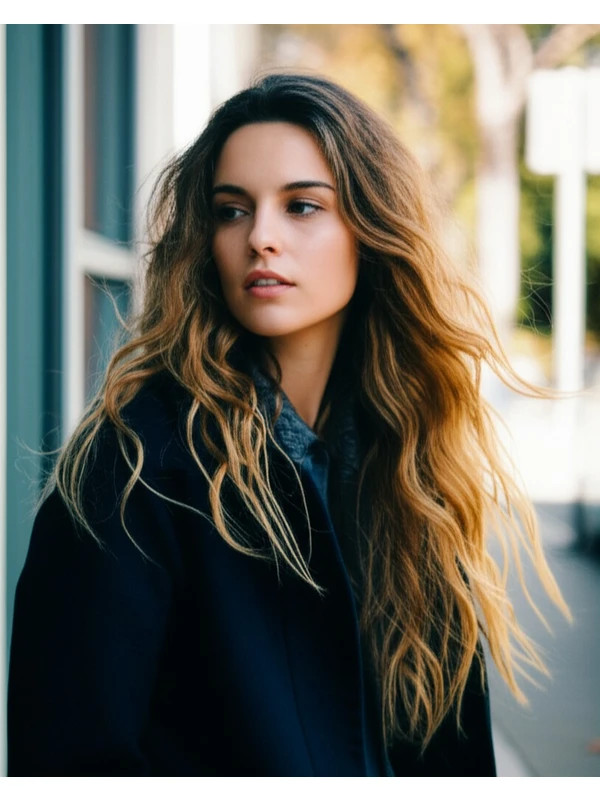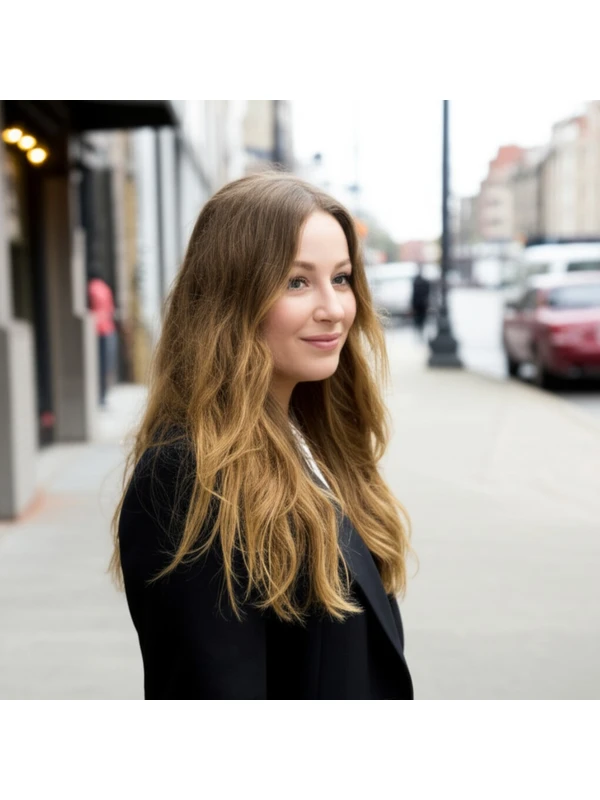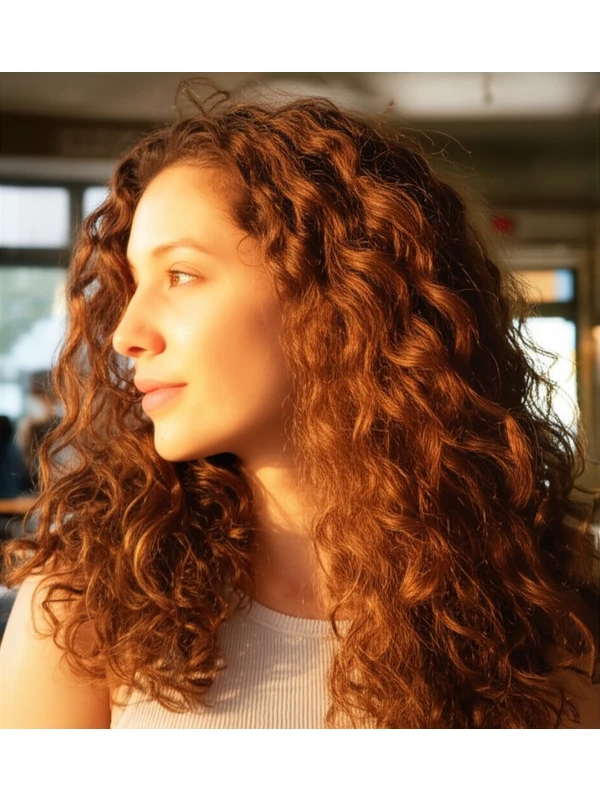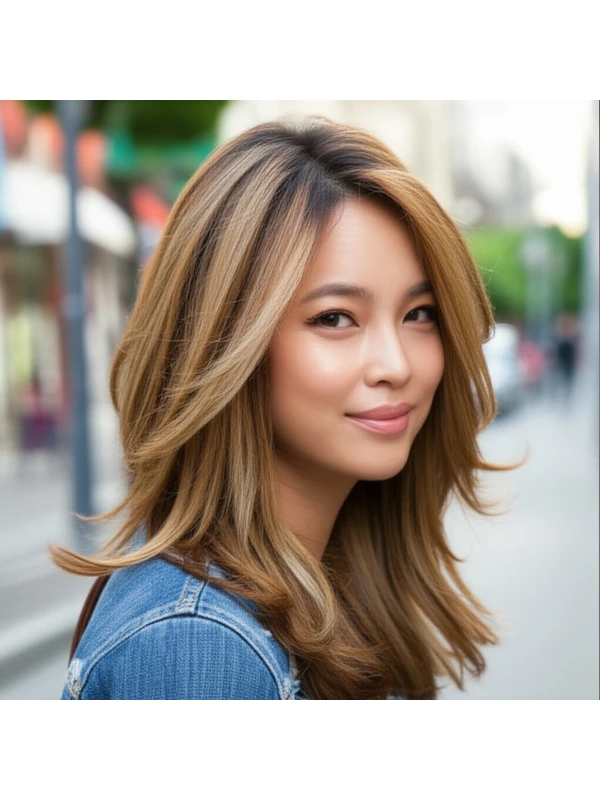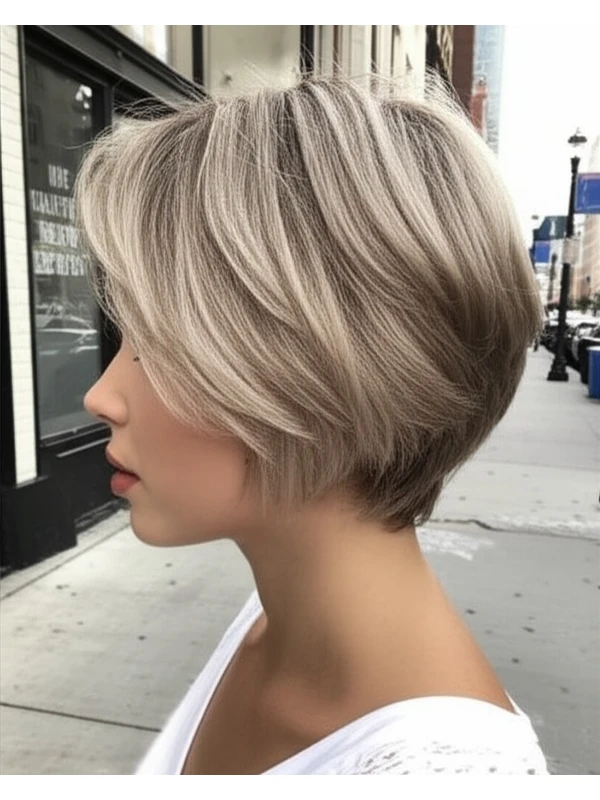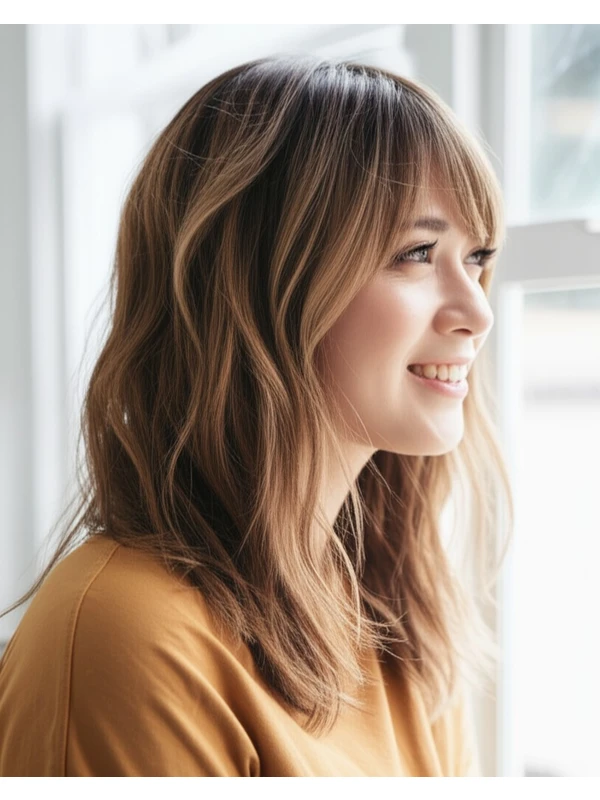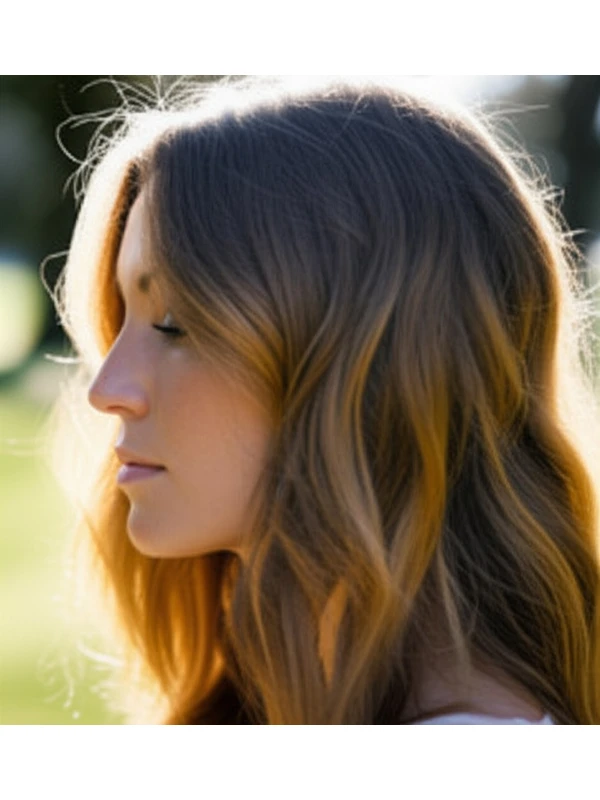#Long Wavy Hair: A Guide to Effortless Flow
Long wavy hair is a classic for a reason – it’s beautiful, versatile, and can be adapted to suit almost anyone! This guide will break down everything you need to know about rocking this look, from finding the right cut to mastering daily styling.
#1) Background & Definition: What is Long Wavy Hair?
Long wavy hair isn't a single, rigid style; it’s more of a feeling. It describes hair that falls past the collarbone (typically between shoulder-length and waist-length) with natural or enhanced waves – think gentle S-shapes rather than tight curls.
- Cut Geometry: The cut is generally built on layers to encourage wave formation and movement. The face framing pieces are often softer, blending into the longer lengths.
- Key Features: Volume at the roots, flowing lines, a soft texture, and a feeling of effortless beauty.
- Length Ranges: Shoulder-length (collarbone) to waist-length (mid-back).
- Alternative Names: Long layered hair, wavy cascade, relaxed waves, beachy waves (though "beachy" implies more deliberate texturizing).
#2) Face Shape Fit: Finding Your Perfect Wave
Long wavy hair can be incredibly flattering. Here’s how it works with different face shapes and fringe options:
- Oval: Lucky you! Almost any long wavy style will look great. Play with part placement (center or side) to highlight your features. A soft, blended fringe can add extra softness.
- Round: Long waves help elongate a round face. Focus on volume at the crown and avoid too much fullness around the cheeks. A deep side part is very flattering. Avoid blunt bangs which can emphasize width. Curtain bangs are an excellent choice!
- Square: Soften strong angles with long, flowing layers that start below chin length. A sweeping side-swept fringe or curtain bangs will also help to soften a square jawline.
- Heart: Long waves balance the wider forehead of a heart-shaped face. Side parts and face-framing layers are key. Avoid very short, blunt fringes as they can accentuate the width of your forehead.
- Diamond: Long wavy hair softens diamond shapes by adding curves. Layers around the cheekbones will help to soften angles. A long, wispy fringe can be beautiful if you want one!
- Oblong (Long): Add width with layers and volume at the sides. Avoid styles that pull the face up or make it appear even longer. Chin-length layers can add balance.
#3) Body Proportions & Height Guidance: Tailoring Your Waves
The length and placement of waves should complement your overall body shape and height:
- Petite (Under 5’4”): Long hair can overwhelm a petite frame if it's too long or heavy. Mid-length to shoulder-length styles with face-framing layers are often best, creating the illusion of more length.
- Average Height (5’4”-5’9”): You have the most flexibility! Waist-length waves look fantastic and balanced.
- Tall (Over 5’9”): Longer lengths work beautifully to emphasize your height. Consider adding even more layers for movement and a lighter feel.
- Narrow Shoulders: Layers that add volume at the shoulders will create balance. Avoid styles that are too flat or straight across.
- Broad Shoulders: Keep the focus away from the shoulders with face-framing layers and softer lines around the face. Avoid excessive layering directly over the shoulder area.
- Short Neck: Longer hair helps elongate the neck. A side part is more flattering than a center part, as it creates an asymmetrical look that visually lengthens the neck.
#4) Works Best With Hair Types & Densities: Finding Your Wave Sweet Spot
This style adapts to various textures and densities but requires some adjustments:
- Straight (Type 1): Requires more styling to create waves. Use a curling iron, wand, or braiding techniques.
- Wavy (Type 2): Naturally works with this style! Focus on enhancing your natural wave pattern with layering and texturizing products.
- Curly (Type 3): Can be adapted but requires careful consideration of curl size. Longer lengths allow for more definition and flow.
- Coily (Type 4): Can also work, especially if you want to stretch the coils into elongated waves. Requires moisture and strategic layering to avoid bulkiness.
- Fine Hair: Layers are essential for creating volume and movement. Avoid heavy conditioners that can weigh hair down.
- Medium Hair: Generally easy to style; layers will enhance natural wave patterns.
- Thick Hair: Requires more thinning and shaping to remove weight and create flow.
- Shrinkage (Curls & Coils): Remember shrinkage! A "shoulder-length" wavy or curly hairstyle might end up much shorter when dry. Consult with your stylist about the stretched length you desire.
#5) Styling Variations: From Sleek to Textured
Long wavy hair is incredibly versatile:
- Sleek vs. Textured: Use a smoothing serum for sleek waves, or texturizing spray for a more undone look.
- Middle vs. Side Part: A center part creates symmetry; a side part adds softness and volume.
- Fringe Variations: Curtain bangs, wispy fringes, or face-framing layers can all be incorporated.
- Occasion Styling:
- Casual: Air dry with sea salt spray for effortless waves.
- Office: Smooth the hair with a flat iron and add shine serum.
- Evening: Use a curling wand to enhance waves, add volume at the roots, and finish with hairspray.
#6) Maintenance: Keeping Your Waves Gorgeous
- Trim Cadence: Every 8-12 weeks to remove split ends and maintain shape.
- At-Home Routine: Gentle shampoo & conditioner, leave-in conditioner (especially for dry or curly textures), heat protectant if using hot tools.
- Heat vs Air Dry: Air drying is healthier but takes longer. Use a diffuser on low heat for curls/coils to enhance definition and minimize frizz.
- Product Checklist:
- Shampoo & Conditioner: Hydrating formulas are best.
- Leave-In Conditioner: Essential for moisture, especially for wavy, curly, or coily hair.
- Styler (Mousse, Cream, Spray): To define waves and add hold.
- Finishing Product (Serum, Hairspray): For shine and hold.
- Estimated Daily Styling Time: 15-45 minutes depending on your natural texture and desired style.
#7) Grow-Out Roadmap: Evolving Your Look
- Months 1-3: The cut will maintain its shape well. Focus on hydration and preventing split ends.
- Months 3-6: Layers may start to blend together slightly. A trim can refresh the shape and remove any weight that has accumulated.
- Maintaining Shape: Regular trims are key! Use a texturizing spray or sea salt spray between washes for added definition.
#8) Color Pairings: Enhancing Your Waves
- Cool Undertones (Ash Blonde, Silver): Enhance the cool tones with icy highlights and lowlights.
- Warm Undertones (Golden Brown, Copper): Rich caramel highlights or a balayage technique will bring out your natural warmth.
- Low-Commitment Options: Glosses can add shine and tone without significant color changes.
#9) Season & Occasion Guide: Styling for Every Moment
- Spring/Summer: Light, airy styling with sea salt spray or texturizing products. Braids and updos work well in warm weather.
- Fall/Winter: Add warmth with richer tones and more defined waves. A sleeked-back style is perfect for formal events.
- Work: Polished waves with minimal frizz.
- Weddings: Romantic, flowing styles with soft curls or loose braids.
- Parties: Playful, textured waves with added volume at the roots.
#10) Cost & Time: What to Expect
- Salon Time: 1.5 - 3 hours (depending on complexity and stylist).
- Price Range: Relatively higher than simpler cuts – expect a range of $80-$250+ depending on location and experience of the stylist.
#11) Pros & Cons: Weighing Your Options
Pros:
- Versatile - easily styled for different occasions.
- Flattering to many face shapes.
- Creates a soft, feminine look.
- Can be adapted to various hair types and densities.
Cons:
- Requires regular trims to maintain shape.
- Styling can take time (especially without natural wave).
- May require more product than shorter styles.
#12) Salon Consultation Script: Questions to Ask Your Stylist
Here are some prompts you can use during your consultation:
- "I love the look of long wavy hair, but I'm worried about it looking too heavy on my [face shape]."
- “Can we discuss how layering will work with my natural wave pattern?”
- "What styling products would you recommend for my hair type and desired level of texture?"
- "How often do you think I’ll need trims to maintain the shape?"
- “I'm concerned about shrinkage. Can we talk about what length to cut so it looks like [desired stretched length] when dry?”
#FAQs: Your Burning Questions Answered
- Can I achieve long wavy hair if my hair is straight? Yes, but it requires more styling with hot tools or braiding techniques.
- How do I prevent frizz in my long waves? Use a leave-in conditioner and avoid excessive heat styling. A silk pillowcase can also help reduce friction.
- What’s the best way to add volume at the roots? Teasing, root lifters, or backcombing are all options.
- Can I wear my hair up with long wavy hair? Absolutely! Loose buns and ponytails look beautiful while still showcasing your waves.
- How do I deal with split ends without cutting off length? Regular trims are the best solution, but deep conditioning treatments can help strengthen strands in between cuts.
- Is this style suitable for all ages? Absolutely! It’s a timeless look that can be adapted to suit any age group by adjusting the layers and styling techniques.
